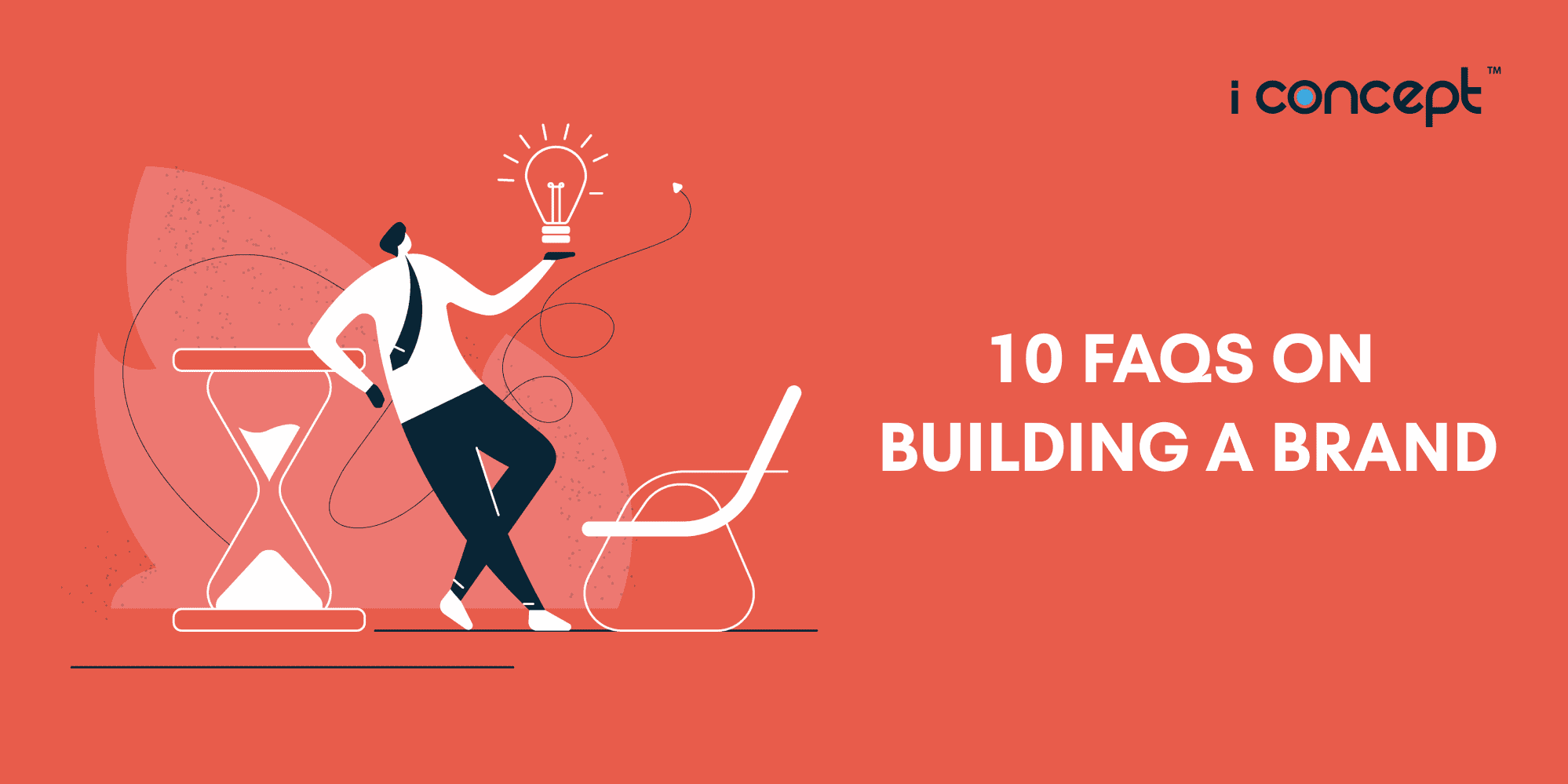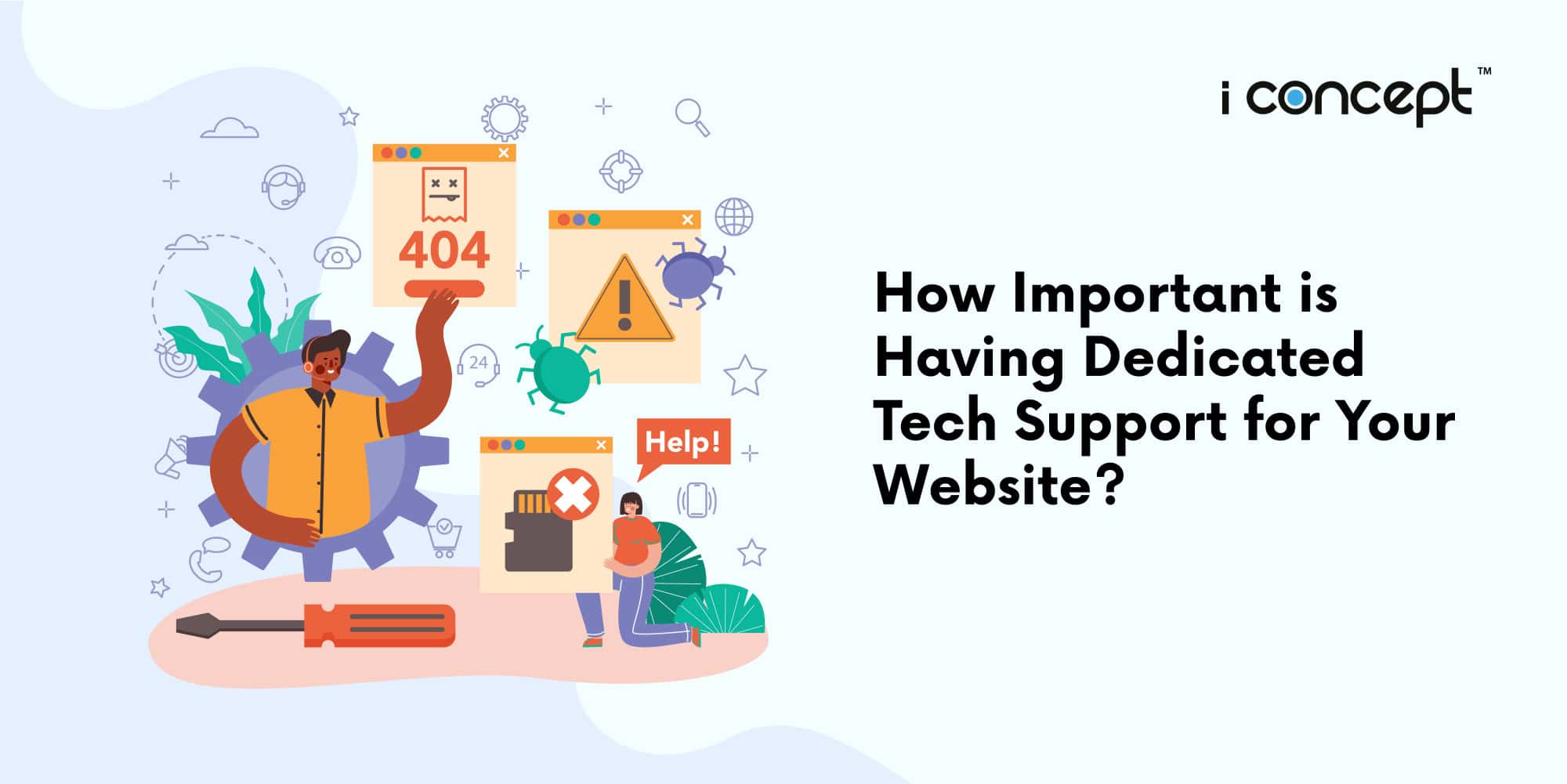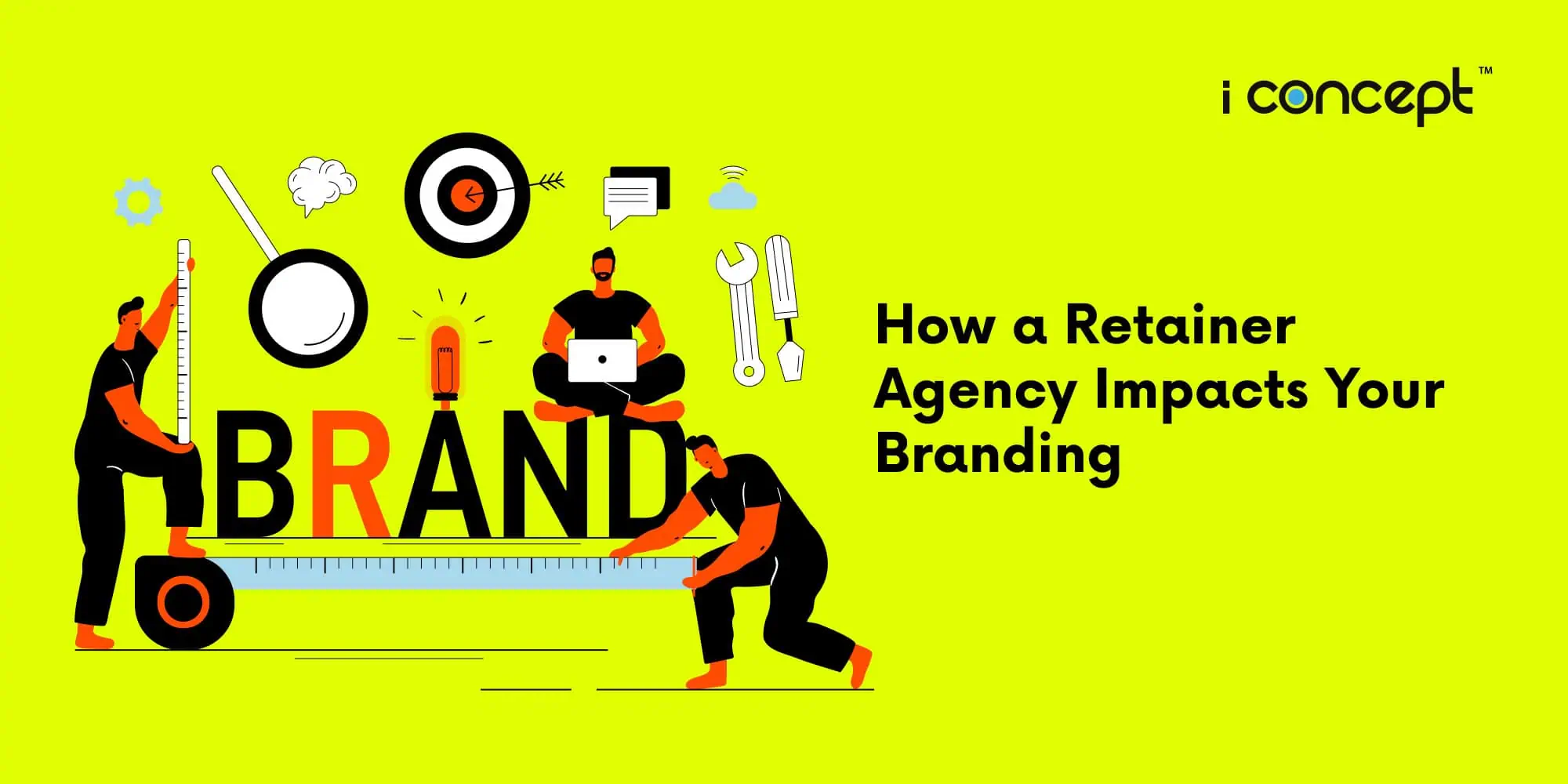Building a brand from the ground up or rebranding is never easy. The branding or rebranding process is a long and tedious journey, but one that is definitely worthwhile. But if the concept of “branding” is still foreign to you, you’d have endless questions on how to go about it. So as a branding agency in Singapore, we’ve put together some common questions you might have before you kickstart your branding or rebranding journey. Here are 10 frequently asked questions on how to do branding in Singapore.
1. What is branding?
By definition, branding is how your consumers perceive you. It includes the process of building your brand, shaping perceptions and distinguishing your company from the rest. Of course, there’s a lot more that goes into it (in which we will explore in the following questions). Essentially, branding is transforming your business, including the steps you take to build a loyal consumer base and gain a competitive edge over others within the market. Your brand is how your customers perceive you and what you want them to perceive you as.
2. Is branding necessary?
Absolutely! As the saying goes, “Customers buy the brand, not the product.”
Every business has a story to tell. But in order to communicate your brand message and promise effectively, you’ll need a sound branding strategy. This will help to bring the entire brand together and therefore help you create the brand experience you want your consumers to receive. Moreover, as much as a product should be able to sell itself, consumers look for a spark in their connections with a brand. You see, the power of what a brand can be is literally, endless.
Think of it this way: Why does everyone covet an iPhone rather than the countless smartphone brands out there? They are mobile phones all the same, they serve the same functions and they do just about the same things. But why an iPhone? That’s due to the perceived value of the Apple brand outdoes the rest of its competitors. Consumers are willing to pay a higher price because it is from Apple. This perceived value is one that is accumulated and built over time due to the branding efforts implemented since the company’s inception. And the key to Apple’s branding here is emotions. Their campaigns, ads, visuals and copies all revolve around one thing — how an Apple product would make you, a consumer, feel. This consistency of tapping on consumers’ emotions and putting customers at the heart of everything they do is what makes Apple a brand so different from the rest. And to achieve all these, a comprehensive and holistic branding strategy is more than necessary.
In essence, here are a few reasons why branding is important:
- Gives your business a purpose and direction
- Builds loyalty and trust amongst consumers
- Builds brand equity over time
- Sets you apart from competitors
- Helps you connect and engage with consumers
- Cultivates brand advocates for your business
3. I have a logo. Does a logo constitute a brand?
Unfortunately… no, a logo does not equate to a brand. So what does go into a brand? The short answer to this would be, everything. From your logo to your tagline, to the colours you use, the voice your brand takes on, the visuals you use, product packaging, your brand values, the visuals, the art style and direction and the list goes on. So having a logo does not constitute, neither is it sufficient for branding. Rather, a logo is just a small portion of your brand identity, under the bigger umbrella of branding. For a visual explanation, check out this diagram that shows you the difference between a logo, brand identity and branding:
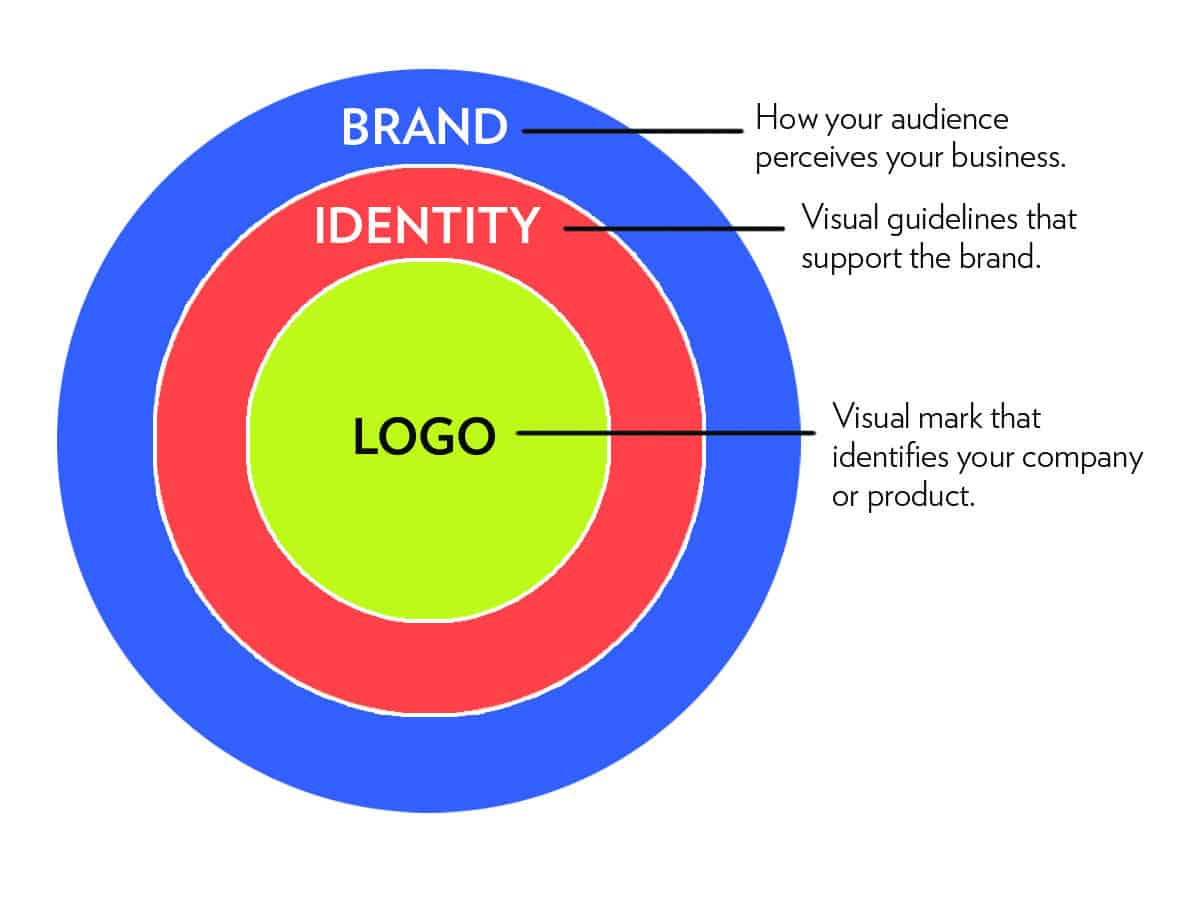
4. What is Brand Identity?
Now that we’ve established that brand identity is only but a portion of branding, you may then ask, what is brand identity? Brand identity is what makes up all the visual components of your entire branding campaign. For instance — logo, colour palette, design elements or even art direction. These elements are the tangible aspects of a branding strategy and are often created as a result of the brand’s voice, values, personality and brand message. A solid brand identity encapsulates all of these. As such, thorough research and understanding of the brand is needed before an apt brand identity is crafted. Here are a few examples of brand identities that have stood out over the years:
a. AirBnB

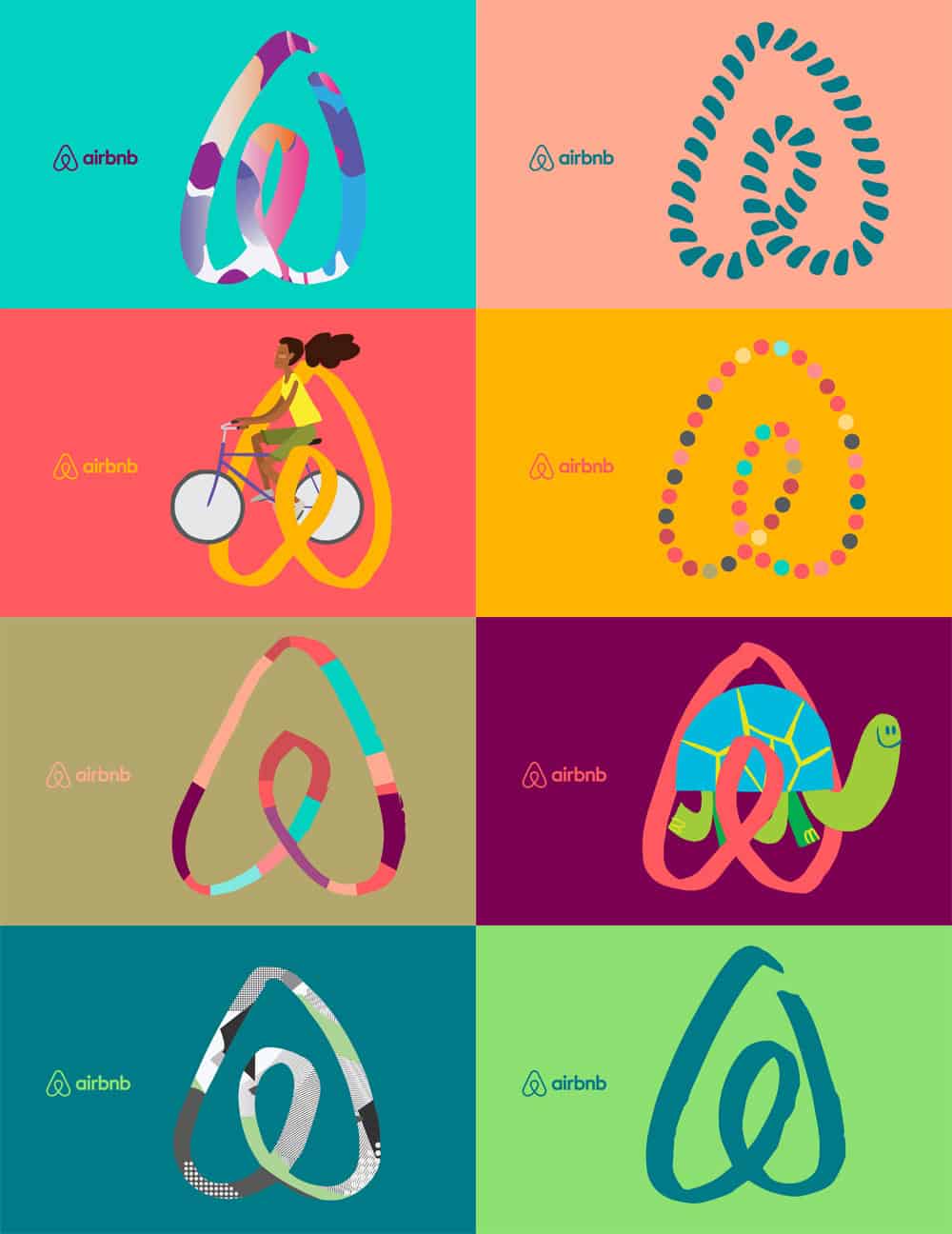
b. Spotify

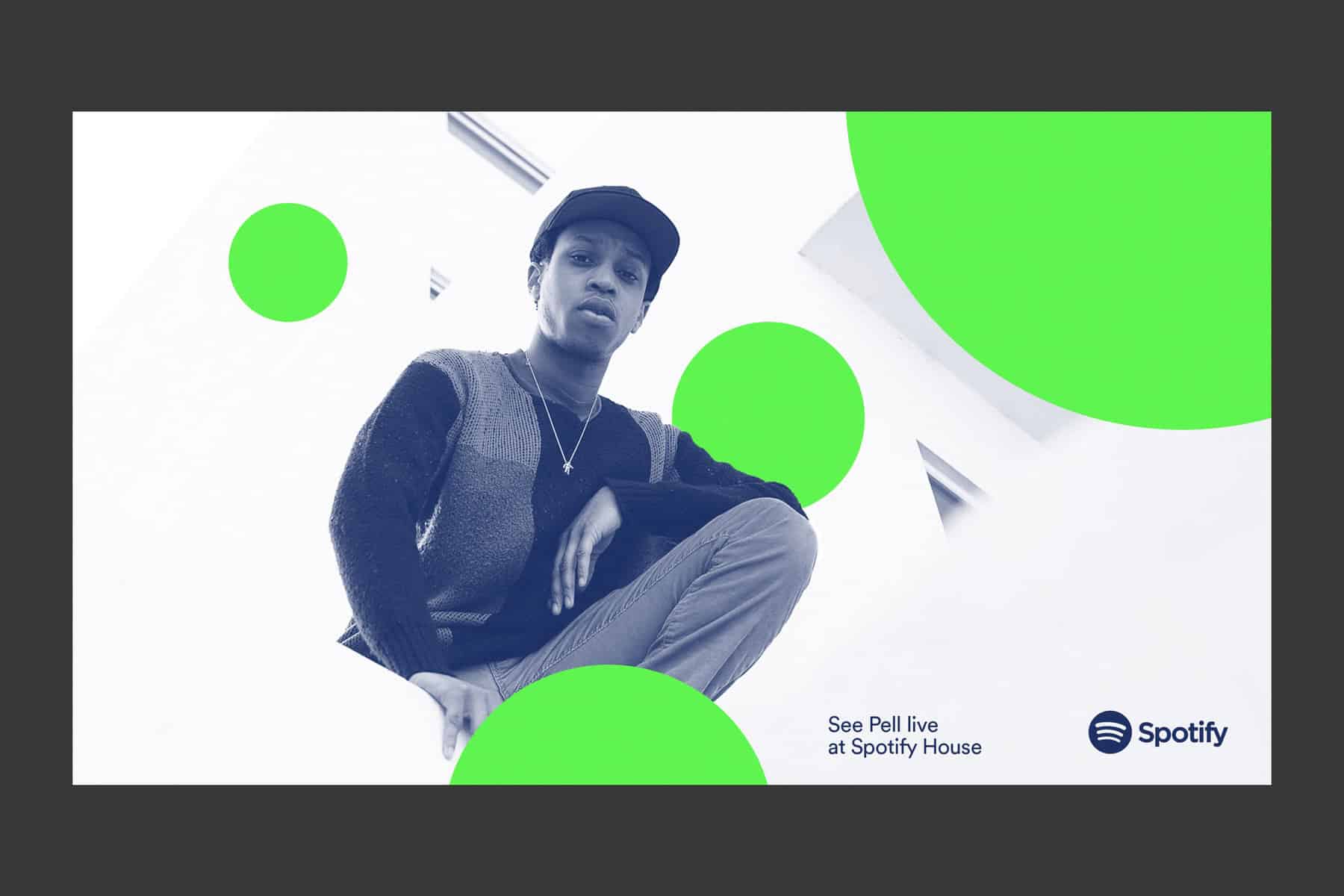
Here’s a closer look at the four main elements that go into a brand identity:
- Logo: Serving to be the cornerstone of your brand identity, you would want to make sure your logo communicates your brand values, stays evergreen (for as long as it can), is visually appealing and of course recognisable. You’d want consumers to remember your logo and remember it favourably.
- Colour Palette: Choosing a colour palette that fits your brand is just as crucial. Colours are often known to be associated with certain emotions, hence the right colour palette can evoke these same emotions in your consumers and prospects as well.
- Typography: Just like colours, typography speaks its own language too. So it is wise to choose a font that accurately depicts your brand personality and voice.
- Form/Shape: Decide on a form or shape you’d like to employ for your brand. This refers to a visual element that could appear in your logo and then followed through across all your brand collaterals. Not only does this create consistency for the brand, but it also creates familiarity and ensures memorability.
5. Branding vs. Marketing – Which is more important?
If you’re a business owner contemplating between investing your money in branding or marketing, here’s the cold hard truth: you can’t do one without the other. You can, but it probably would not fare as well if you had both. Let’s first unpack the definitions of both. We established earlier that branding refers to the process of shaping your brand and defining who you are as a company. Marketing, on the other hand, refers to the tools you use and the steps you take to engage with your audience and promote your product or service. So the problem here is not which is more important, the question here should be, “Which comes first, branding or marketing?”
Now that that’s out of the way, we’ll explore the answer of the said question above. We know by now that branding forms the core and the foundation of your entire business. So with a comprehensive branding strategy, you are then able to identify and devise specific marketing tools or tactics to build your brand awareness and expand your consumer base. While branding focuses on who you are as a brand, marketing is what you do to amplify that message. In essence, branding is a long-term investment while marketing methods are short-term and tend to change with the times. You’d need to first lay a solid foundation of your branding before you are able to branch out with marketing. Thus, branding comes first before marketing.
6. What are the fundamental components I need for a successful brand?
Most successful brands have two things in common — they know what they want and they know what their consumers want (or need). And in order to find that out here are five components you’ll first need to pin down to come up with a comprehensive branding strategy.
a. Purpose: While it is important to know what you want to sell or promote, it is just as key to know why and what purpose your service or product serves. This is because products are plenty, but the purpose can be uniquely yours. Your brand’s purpose is an opportunity to differentiate yourself from the rest of your competitors and is what keeps your brand going. Let’s go back to the Apple example. Sure, customers all need a phone. But why a phone from Apple specifically? That is because Apple’s brand promise is “Think different”. And that’s what makes them so distinct.
b. Consistency: By ensuring consistency across your campaigns and strategy, this can allow you to cultivate trust and loyalty amongst your audience. Consistency tells consumers what to expect and enforces the brand message you want to tell. This also means making sure that the entire customer experience is accurate to your brand’s beliefs and values from your website to social media or the in‑store experience. This will help to link your brand to like-minded individuals and benefit your brand as a whole.
c. Emotion: In a saturated market of countless products, how do you attract customers to your brand? By connecting with your customers on a deeper level. Consumers don’t want to just buy a product, they want to feel something beyond that. Understanding this need can help your brand to grow heaps when your consumers feel like they’re part of something bigger. So by tapping on emotions, it fosters a stronger bond between a brand and its audience.
d. Flexibility: Staying relevant is a necessity, more than just a luxury. Flexibility is especially necessary for businesses who want to be in the industry in the long run. Trends come and go and people change. Because of that, brands need to be adaptable to change and know when it is necessary. And yes, you can still be consistent while flexible. This doesn’t mean changing your colour palette every now and then because Pantone of the year changes annually. It means changing your logo design so it doesn’t look it came from a food stand in the 1950s.
7. What makes a brand successful?
Now that we’ve gone a little in-depth into what makes up a branding strategy and what it does for you, it’s time to cover the what makes a brand successful. Measuring the success of your brand building can be tricky as branding covers both the intangible and tangibles aspects of a brand. At the core of it, brands should first work towards nailing down the core components of a brand:
- Vision
- Mission
- Brand Purpose
- Brand Values
- Brand Position
- Brand Personality
- Brand Voice
By establishing the basics of a brand, the following branding and marketing efforts will fall into place naturally.
8. What is your branding strategy?
A branding project takes a lot of time. We’re talking about minimally six months or so before a complete brand guide is crafted and a thorough website or marketing plan is devised. So in case you’re wondering why it takes a particularly long time, let us bring you through our branding work process.
i. Discover
At the initial stage, we get down to every nook and cranny of your business aspect to discover the company’s needs and perceptions. This is also where the problem-identifying takes place. Thereafter, sufficient research and analysis are done to evaluate your brand’s position in the market by doing a thorough analysis and clarify the brand’s vision, mission, goals and values.
ii. Define
The next step here would be to define the brand and its story. This is where we create the brand personality and find the tone of voice you’d wish for your brand to develop. Who you are and what you stand for — these are some things we’ll narrow down to make sure you can make the impact you wish to create.
iii. Develop
At this stage, this is where the ideation starts. Where creativity flows, is when the big idea surfaces. This is where we come up with the solutions to the problems we identified earlier in the ‘Discover’ stage. This step is where most of the creative work will take place.
iv. Deliver
At the delivery stage, the ideas are put into prototypes or go through testing just to make sure all designs are bulletproof. This is also where the finalisation of all ideas and concepts occurs.
v. Disseminate
Now that we’re here at the last stage, it’s go-time. All you have to do now is sit back and watch all branding and marketing efforts come to life.
9. How much does a branding or rebranding cost?
The question you’ve all been waiting for — how much does one branding project cost? One project will start at minimally S$30,000. Before you start gasping for air, do note that each project takes minimally six months to brew, while the results are long-term. If you’re keen to work with us, fret not, cause we strive to make your every penny worth. Chat with our brand guardians and they’ll take you through the relevant processes.
10. Are there any grants or funding support available for Singaporean companies that are looking to build their own brand?
You’re in luck. Due to the ongoing global pandemic, the Singapore government has rolled out the Enterprise Development Grant (EDG) for businesses who have suffered major financial losses. The grant aims to support businesses in three main ways — Core Capabilities, Innovation and Productivity and Market Access. To qualify for the EDG, you first need to:
- Be a business entity registered and operating in Singapore
- Have a minimum of 30% local shareholding
- Be in a financially viable position to start and complete the project
If you tick all of the above boxes, you’re almost set. You can also check out our EDG guide for businesses for more information. Another good news is that I Concept is an Enterprise Singapore-recognised consultant and a branding agency. So if you’re looking for a branding solution, then your solution is right here. 😉
That was a lot to consume but we do hope you have a clearer idea on what branding is and how to approach it. Still unsure on how to get started with your branding journey? Drop us an email, we’ll be glad to walk you through it.
